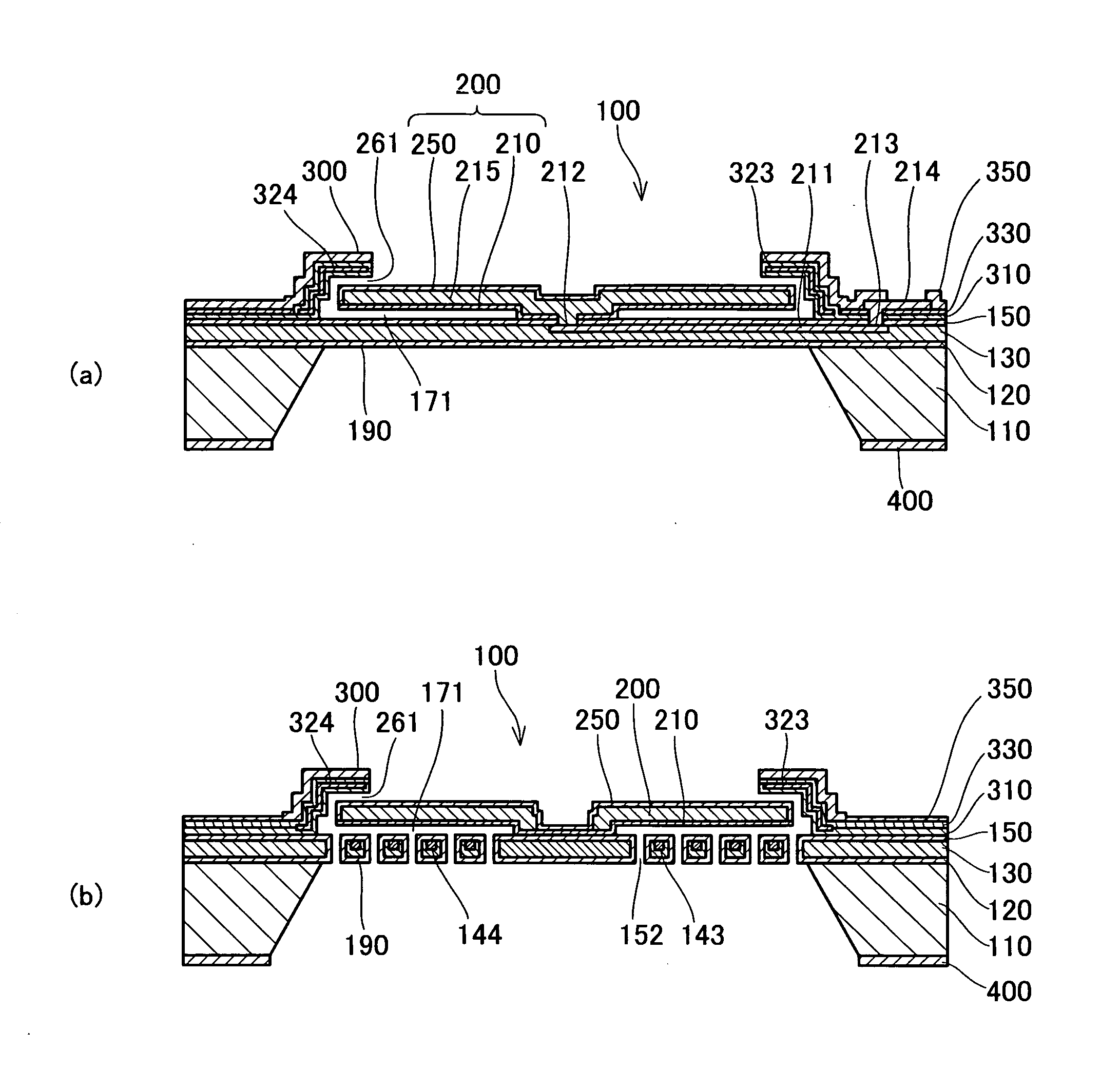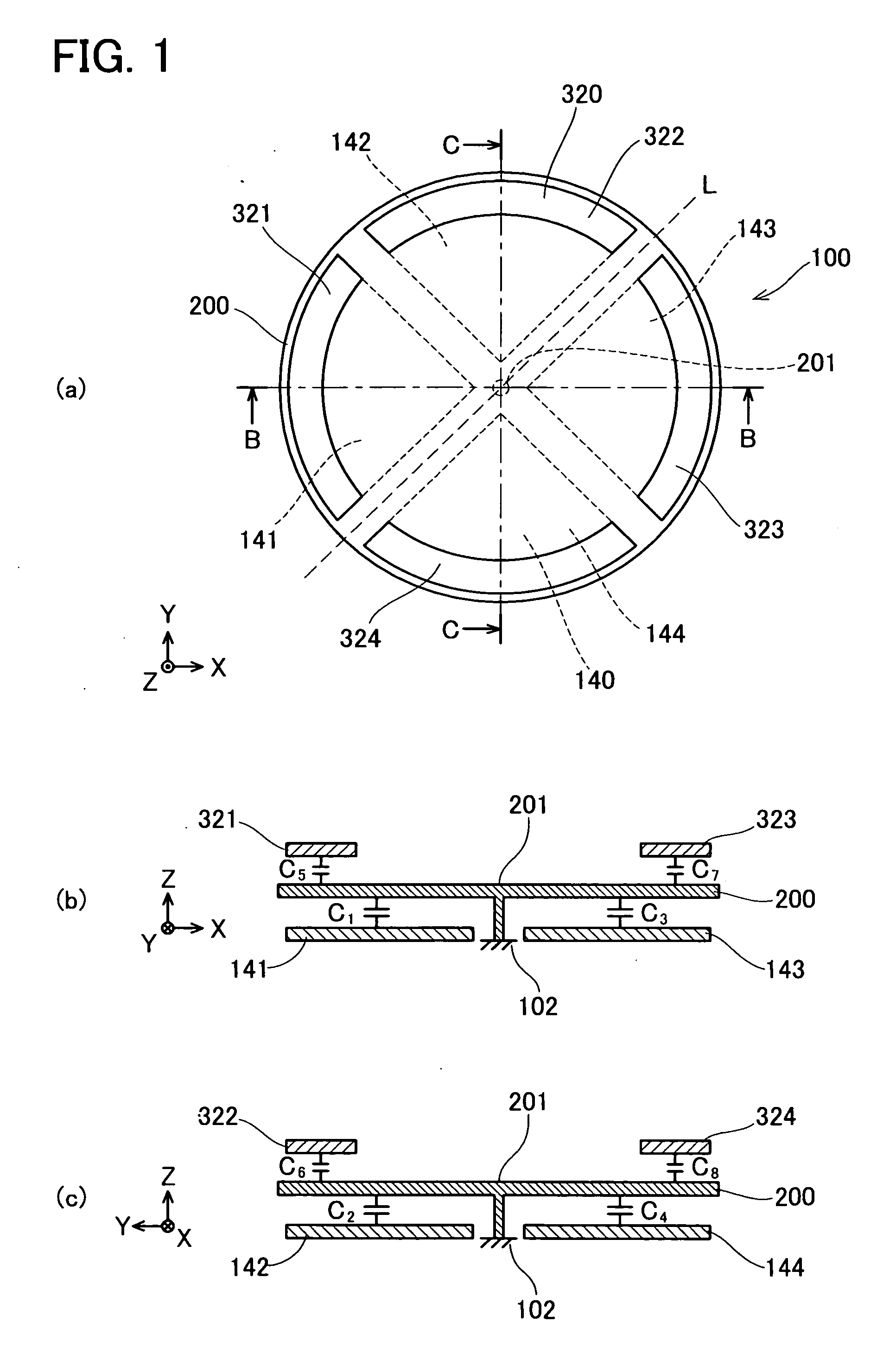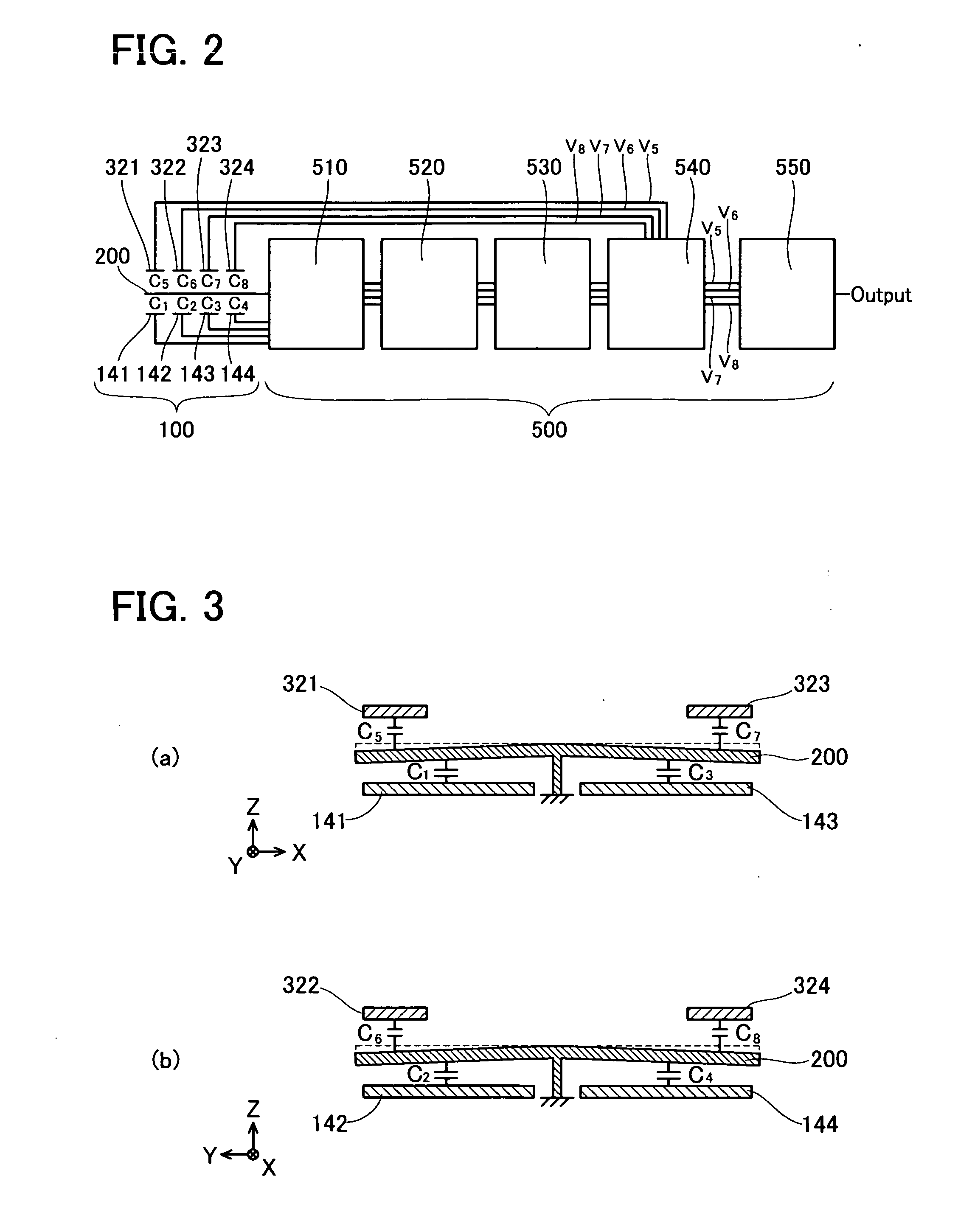Microphone and a method of manufacturing a microphone
a manufacturing method and microphone technology, applied in the direction of generators/motors, electrostatic generators/motors, electrical transducers, etc., can solve the problems of reducing the durability of the microphone, affecting the performance of the microphone, and affecting the quality of the microphone. , to achieve the effect of reducing the siz
- Summary
- Abstract
- Description
- Claims
- Application Information
AI Technical Summary
Benefits of technology
Problems solved by technology
Method used
Image
Examples
embodiment 1
[0128]FIG. 1 depicts the general concept of a microphone 100 as the first embodiment. FIG. 1(a) is a plan view of the microphone 100. FIG. 1(b) is a vertical cross-section view corresponding to line B-B shown in FIG. 1(a). FIG. 1(c) is a vertical cross-section view corresponding to line C-C shown in FIG. 1(a).
[0129] The microphone 100 comprises a circular diaphragm 200. The diaphragm 200 is supported to the frame 102 of the microphone 100 at a center portion 201 of the diaphragm 200.
[0130] Four upper electrodes 321, 322, 323, 324 are arranged to a member (not shown) that is fixed to the frame 102. The four upper electrodes 321, 322, 323, 324 are positioned facing the front surface of the diaphragm 200 (the surface that receives acoustic waves). The four upper electrodes 321, 322, 323, 324 will be collectively referred to as upper electrodes 320. The upper electrodes 320 are arranged at equal intervals in the circumferential direction of the circular diaphragm 200. Each of the uppe...
embodiment 2
[0170] Next, the second embodiment of the present invention will be described in detail below with reference to the drawings. FIG. 6 shows the microphone 100b in this embodiment. In this embodiment, capacitors serving as sensors and capacitors serving as actuators are arranged on the same surface of the diaphragm (the front surface which receives acoustic waves).
[0171]FIG. 6(a) is a plan view of a microphone 100b. FIG. 6(b) is a vertical cross-section view corresponding to line D-D of FIG. 6(a).
[0172] Microphone 100b comprises a circular diaphragm 200 that is identical to the first embodiment. The diaphragm 200 is supported by the frame 102 of the microphone 100b at a center portion 201 of the diaphragm 200.
[0173] Four second electrodes 141f, 142f, 143f, 144f are arranged facing the front surface of the diaphragm 200. The four second electrodes 141f, 142f, 143f, 144f may be collectively referred to as the second electrodes 140f. Each of the second electrodes 140f is formed in an ...
embodiment 3
[0179] Next, embodiment 3 will be described. The diaphragm of a microphone will sometimes vary from the design thereof due to manufacturing errors or changes thereto over time. When the diaphragm varies from the design thereof, accuracy on identifying the direction of the sound source will decline. Here, the design of the diaphragm is, for example, the shape of the diaphragm and the tilt of the diaphragm with respect to the supported center portion thereof. The embodiment 3 will provide a microphone that can keep the diaphragm in its originally designed state. Therefore, the accuracy on identifying the direction of the sound source will not decline.
[0180] The structure of the microphone of the embodiment 3 may be the same as the structure of the microphone 100 of the first embodiment. The structure of the controller may also be the same as the structure of the controller 500. Thus, FIGS. 1 and 2 will be employed to describe the microphone of the embodiment 3.
[0181] When the shape ...
PUM
 Login to View More
Login to View More Abstract
Description
Claims
Application Information
 Login to View More
Login to View More - R&D
- Intellectual Property
- Life Sciences
- Materials
- Tech Scout
- Unparalleled Data Quality
- Higher Quality Content
- 60% Fewer Hallucinations
Browse by: Latest US Patents, China's latest patents, Technical Efficacy Thesaurus, Application Domain, Technology Topic, Popular Technical Reports.
© 2025 PatSnap. All rights reserved.Legal|Privacy policy|Modern Slavery Act Transparency Statement|Sitemap|About US| Contact US: help@patsnap.com



